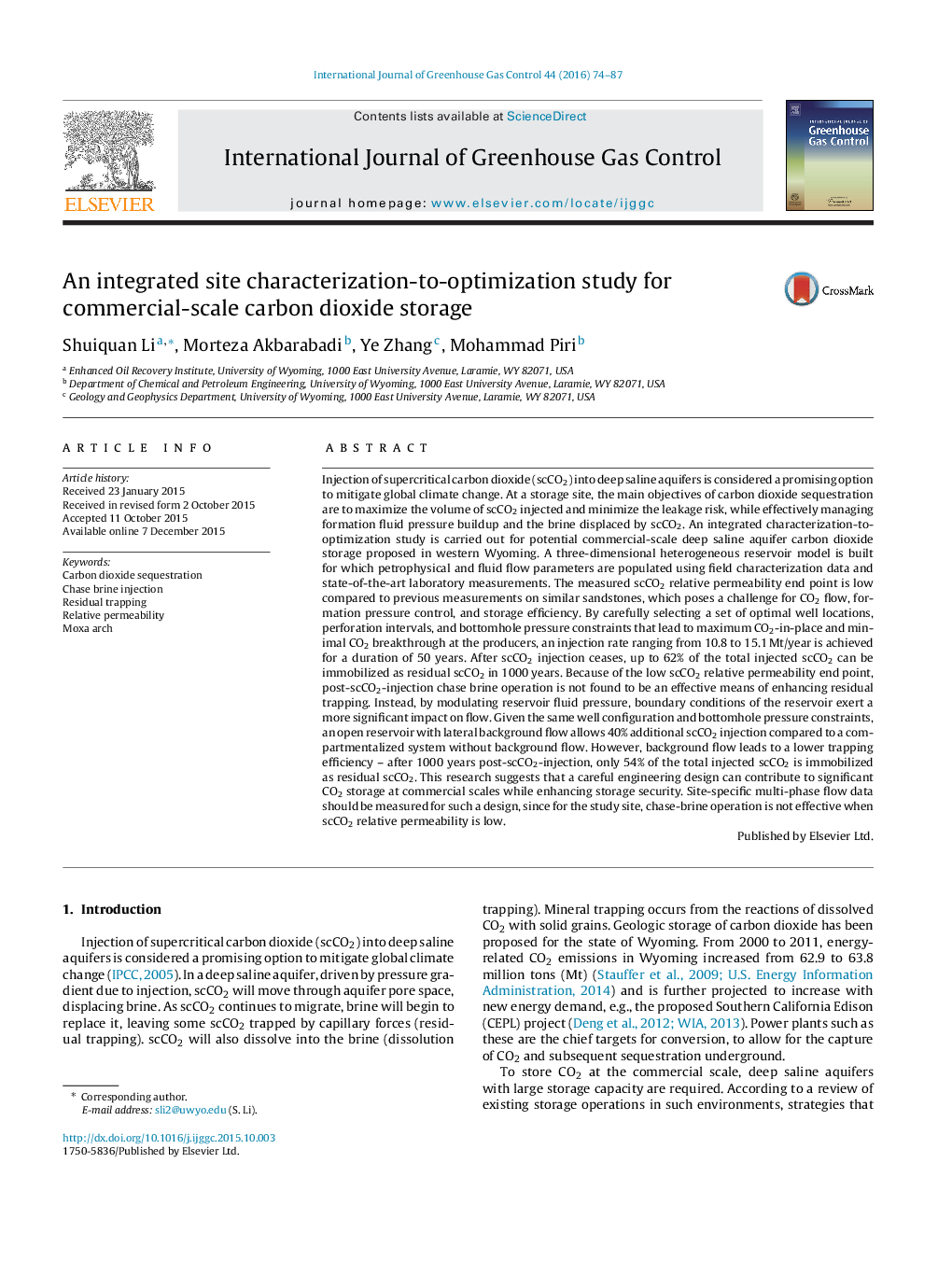| کد مقاله | کد نشریه | سال انتشار | مقاله انگلیسی | نسخه تمام متن |
|---|---|---|---|---|
| 1742950 | 1521977 | 2016 | 14 صفحه PDF | دانلود رایگان |
• An injection rate of 10.8 Mt/year is achieved for a duration of 50 years and 62% of it can be immobilized in 1000 years.
• With a low relative permeability end point, the chase brine is not an effective means of enhancing residual trapping.
• Additional 40% CO2 could be injected into an open reservoir with a background flow compared to one without background flow.
• A careful engineering design, including well configuration, pressure constraints, etc., can contribute to significant CO2.
Injection of supercritical carbon dioxide (scCO2) into deep saline aquifers is considered a promising option to mitigate global climate change. At a storage site, the main objectives of carbon dioxide sequestration are to maximize the volume of scCO2 injected and minimize the leakage risk, while effectively managing formation fluid pressure buildup and the brine displaced by scCO2. An integrated characterization-to-optimization study is carried out for potential commercial-scale deep saline aquifer carbon dioxide storage proposed in western Wyoming. A three-dimensional heterogeneous reservoir model is built for which petrophysical and fluid flow parameters are populated using field characterization data and state-of-the-art laboratory measurements. The measured scCO2 relative permeability end point is low compared to previous measurements on similar sandstones, which poses a challenge for CO2 flow, formation pressure control, and storage efficiency. By carefully selecting a set of optimal well locations, perforation intervals, and bottomhole pressure constraints that lead to maximum CO2-in-place and minimal CO2 breakthrough at the producers, an injection rate ranging from 10.8 to 15.1 Mt/year is achieved for a duration of 50 years. After scCO2 injection ceases, up to 62% of the total injected scCO2 can be immobilized as residual scCO2 in 1000 years. Because of the low scCO2 relative permeability end point, post-scCO2-injection chase brine operation is not found to be an effective means of enhancing residual trapping. Instead, by modulating reservoir fluid pressure, boundary conditions of the reservoir exert a more significant impact on flow. Given the same well configuration and bottomhole pressure constraints, an open reservoir with lateral background flow allows 40% additional scCO2 injection compared to a compartmentalized system without background flow. However, background flow leads to a lower trapping efficiency – after 1000 years post-scCO2-injection, only 54% of the total injected scCO2 is immobilized as residual scCO2. This research suggests that a careful engineering design can contribute to significant CO2 storage at commercial scales while enhancing storage security. Site-specific multi-phase flow data should be measured for such a design, since for the study site, chase-brine operation is not effective when scCO2 relative permeability is low.
Journal: International Journal of Greenhouse Gas Control - Volume 44, January 2016, Pages 74–87
